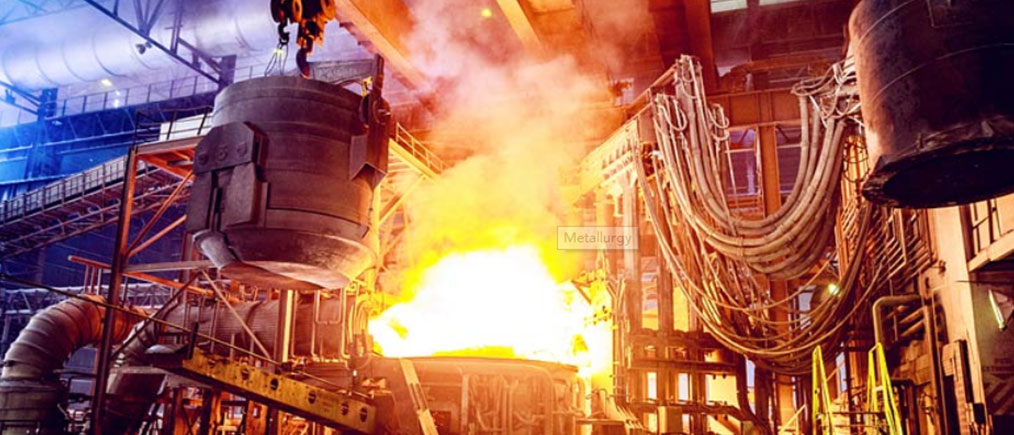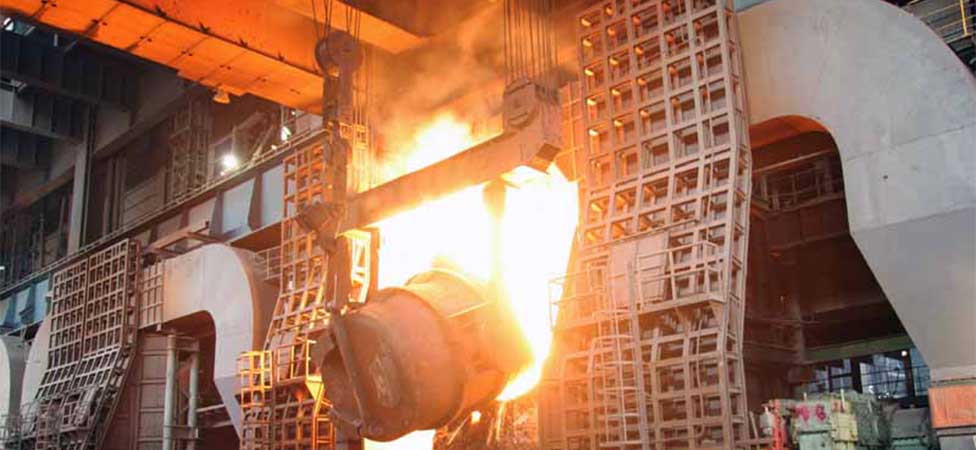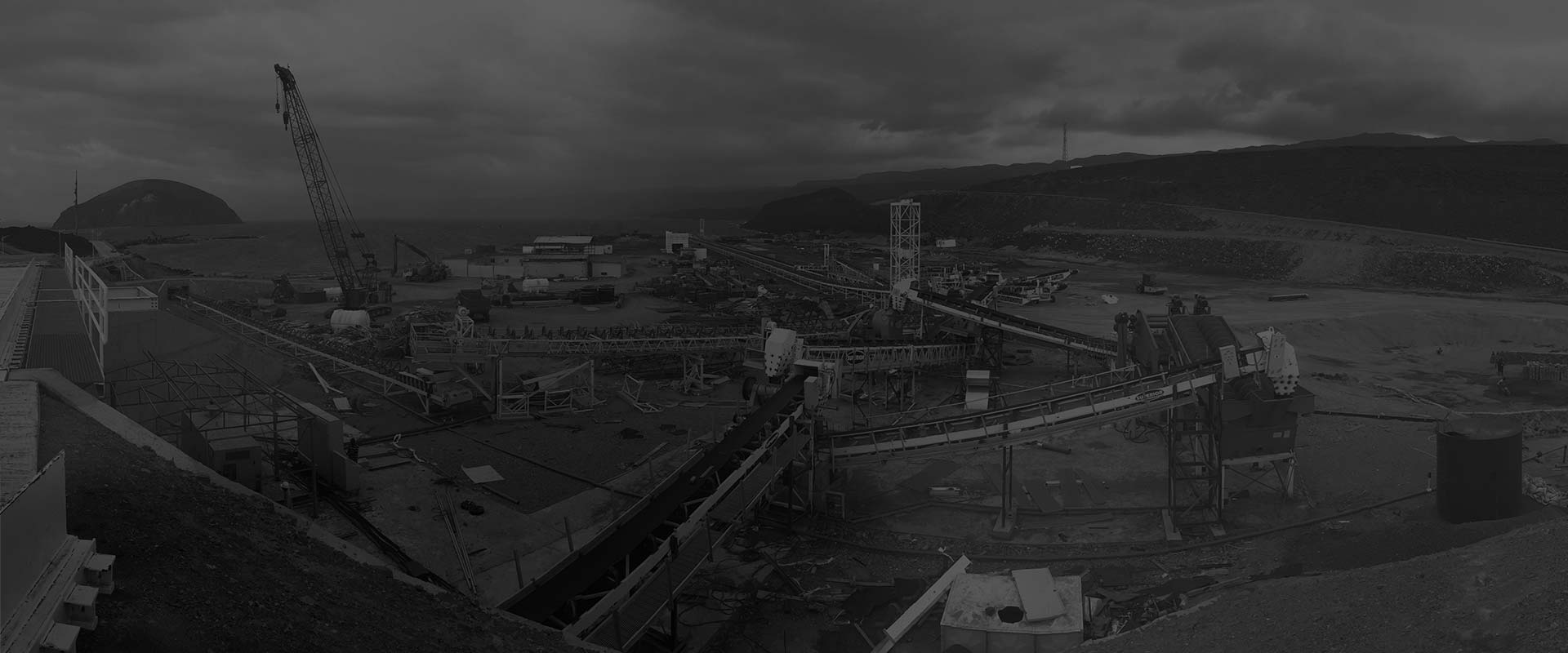0086-379-64087240
Metallurgy refers to the process of extracting metal or metal compounds from ore or other raw materials and making metal materials with certain properties by various processing methods. It includes a series of production departments, such as mining, beneficiation, sintering, coking, refractory, iron making, steel making, rolling, and other auxiliary departments such as transportation, machine repair, and power.
CIC mining heavy machinery also manufacture metallurgy rotary kiln, which are professionals in processing different material, such as nickel iron rotary kiln, alumina rotary kiln and lime rotary kiln. Check if you have any interests.

Blast metallurgical furnace iron making is the main method in modern ironmaking present. Blast metallurgy furnace smelting is a continuous and large-scale high-temperature production process. Iron ore, flux, and coke are transported from charging equipment to furnace top according to the determined proportion and then loaded into the furnace in batches by charging equipment on the top of the furnace, and hot air of 1000-1300 <℃ is blown from tuyere to blast furnace, which makes a series of physical and chemical changes in the furnace, and finally liquid molten iron is generated. CIC can design and produce all kinds of vertical or horizontal converters below 120 tons and mixer furnaces with less than 900 tons.

120T Converter
So-called steel making is to reduce the carbon content and remove harmful impurities in pig iron by smelting, and then add appropriate alloy elements according to the requirements of steel properties, so as to make it steel with high strength, toughness, or other special properties.
In the total production of steel, more than 90% of the steel is made by rolling except for a small part of the steel produced by casting or forging. Our company produces the related machinery in the process of binding, such as rolling mill, tubing straightening machine, cooling bed and flying shear, etc., which can meet the different needs of the rolling process.
In addition, material transportation is also an important process. How to choose the transportation mode of raw materials scientifically and reasonably, to integrate and simplify and improve the resource and transportation efficiency of raw materials transportation system will be a hot spot. The blast furnace hoist we produce is the winch equipment that hauls the material car to and fro between the furnace top and the material pit along the inclined bridge track. It is the main equipment in the material loading system of the material car.
Rotary refining furnaceEquipment/Type | Name of Client/Project | ||
Flying Shear FJ651 | Rizhao Steel Rolling Co., Ltd | ||
Flying Shear FJ641 | |||
Flying Shear FJ130 | Jingye Group, Hebei, China | ||
500t Cold Rolling Mill | Xilin Steel Group | ||
Tubing Straightening Machine | Panzhihua Steel Group | ||
Tianjin Steel Plant | |||
Rotary Refining Furnace | Φ4.9×13.2m | Jiangxi Ruilin | |
Φ4.4×14.6m | China Ruilin | ||
Φ4.2×14m | Yunnan Copper Group | ||
Φ4.2×13.5m | Shandong Lufang Group | ||
Φ3.6×10m | Yunnan Luokuang Heavy Machinery Co., Ltd. | ||
50t Rotary Furnace Shell | Wuhan Steel Group | ||
Jinlin Xinda Steel Co., Ltd. | |||
Hejin Hongda Special Steel Co., Ltd | |||
Slag Ladle | 10m3 Cast-steel | Chinese Steel Corporation | |
Metallurgical Vehicles | Hot Metal Tank Weighing Trolly | 200t | Alliance Steel (M) Sdn.Bhd. |
Ladle Trolly | 200t | ||
Crossing Trolly | 200t | ||
Slag Tank Vehicle | 80t | ||
Metallurgy is a branch of material science and engineering that focuses on the properties and behavior of metals and their alloys. The application of metallurgy rotary kiln plays a vital role in various industries, such as mining, smelting, and chemical processing. Rotary kilns are cylindrical furnaces that are used for the thermal treatment of materials at high temperatures. They are often used in the production of cement, lime, and other materials.
One of the main applications of metallurgy rotary kiln is in the production of cement. Cement is a key ingredient in concrete, which is used in the construction industry. In cement production, limestone and clay are heated in a rotary kiln to form clinker, which is then ground into a fine powder and mixed with gypsum to produce cement. The rotary kiln is used to heat the raw materials to a high temperature, causing chemical reactions to occur, such as the formation of clinker. The use of a rotary kiln in cement production allows for the efficient and precise control of the temperature and residence time, resulting in a high-quality product.
Another application of metallurgy rotary kiln is in the smelting of ores. Smelting is a process in which metal ores are heated to extract the desired metal. The rotary kiln is used to heat the ore to a high temperature, causing the metal to melt and separate from the impurities. This process is commonly used in the production of iron, copper, aluminum, and other metals. The use of a rotary kiln in smelting allows for the efficient and uniform heating of the ore, resulting in high metal recovery rates and reduced energy consumption.
In addition to cement production and ore smelting, metallurgy rotary kilns are also used in various chemical processes. For example, in the production of lime, limestone is heated in a rotary kiln to produce calcium oxide, which is then used in various industrial processes, such as the production of steel and sugar. The rotary kiln allows for the efficient and precise control of the temperature and residence time, ensuring the desired chemical reactions occur.
Furthermore, metallurgy rotary kilns are also used in the treatment of hazardous waste. The high temperatures generated in the kiln can effectively destroy organic compounds and convert hazardous elements into stable forms. This process, known as thermal treatment, is a viable method for the safe disposal of hazardous waste, such as chemical residues, contaminated soils, and medical waste. The use of a rotary kiln in hazardous waste treatment allows for the efficient and controlled destruction of hazardous substances, reducing the environmental impact and health risks associated with improper waste disposal.
Metallurgy rotary kilns find wide-ranging applications in various industries. From cement production to ore smelting, chemical processing, and hazardous waste treatment, the rotary kiln plays a crucial role in the thermal treatment of materials at high temperatures. The efficient and precise control of temperature and residence time offered by metallurgy rotary kilns allows for the production of high-quality products, high metal recovery rates, and safe disposal of hazardous waste. As a result, these rotary kilns have become an indispensable tool in modern industrial processes.
Metallurgy rotary kilns, including alumina rotary kilns and lime rotary kilns, offer a range of advantages in various industrial processes. These advantages make them essential equipment for applications in the metallurgy, cement, chemical, and other industries. Here are some key advantages of using metallurgy rotary kilns.
1. High Temperature Control: Metallurgy rotary kilns are capable of reaching very high temperatures, typically ranging from 800°C to 2000°C. This allows for precise control over the thermal treatment process, ensuring optimum reactions and the desired product quality. For example, in the production of alumina, the high temperature in an alumina rotary kiln facilitates the conversion of raw materials into alumina oxide, a crucial material for the production of aluminum.
2. Efficient Heating and Residence Time: Metallurgy rotary kilns offer efficient heat transfer due to their unique design. The cylindrical shape and inclination allow for better contact between the material being processed and the direct or indirect heat source. The long residence time of the material inside the kiln allows for thorough processing and reaction, ensuring the desired transformation of substances, such as the calcination of limestone into lime in a lime kiln.
3. Versatility: Metallurgy rotary kilns can be adapted to process a wide range of materials and products. For example, they are commonly used in the production of cement, lime, alumina, and various metals. Each kiln can be customized to suit the specific requirements of the material being processed, allowing for flexibility and versatility in industrial applications.
4. Energy Efficiency: Metallurgy rotary kilns offer energy-efficient operations by utilizing various heating techniques. These include the use of fossil fuels, such as coal, oil, or gas, and the deployment of alternative energy sources, such as biomass or waste heat recovery systems. With proper design and control, metallurgy rotary kilns can reduce energy consumption while maintaining high-quality output.
5. Precise Process Control: Metallurgy rotary kilns are equipped with advanced control systems that allow for precise regulation and monitoring of critical parameters, such as temperature, pressure, and feed rate. This ensures consistent product quality and minimizes the risk of process deviations or failures. Automation features also enable better process control and optimization, leading to increased efficiency and productivity.
6. Environmental Sustainability: Metallurgy rotary kilns can contribute to environmental sustainability through various means. Advanced emission control technologies, such as scrubbers and bag filters, can be integrated into the kiln system to reduce air pollution. The high-temperature operation of these kilns facilitates the destruction of harmful substances, including volatile organic compounds (VOCs) and hazardous waste, promoting safe waste disposal practices.
7. Cost-effectiveness: Metallurgy rotary kilns offer long service life and low maintenance requirements, contributing to their cost-effectiveness. Their robust construction and reliability make them durable equipment that can withstand the harsh conditions of high temperatures and continuous operation. Additionally, the efficient heat transfer capabilities of the kilns reduce energy consumption, resulting in cost savings over time.
In conclusion, metallurgy rotary kilns, including alumina rotary kilns and lime rotary kilns, offer numerous advantages in various industrial processes. They provide precise temperature control, efficient heating, versatility, energy efficiency, precise process control, environmental sustainability, and cost-effectiveness. These advantages make metallurgy rotary kilns essential equipment in metallurgy, cement, chemical, and other industries where thermal treatment of materials is required.
The working principle of a metallurgy rotary kiln, whether it is an alumina rotary kiln or a lime rotary kiln, is based on the process of thermal decomposition or calcination. These kilns are cylindrical furnaces that rotate slowly to ensure uniform heating and thorough processing of materials. Here is an explanation of the working principle of metallurgy rotary kilns.
Rotary kilns in metallurgy, such as alumina and lime rotary kilns, operate on the principle of pyroprocessing, which involves the heating of materials at high temperatures to induce chemical reactions or physical transformations. The process inside a rotary kiln can be divided into three main zones: the preheating zone, the calcination zone, and the cooling zone.
1. Preheating Zone: In this zone, the raw materials are introduced into the rotary kiln and gradually brought up to the desired temperature. The materials are typically fed into the kiln from the colder end and travel towards the hotter end. As the materials move through the preheating zone, they are exposed to the hot gases generated by the combustion of fuels or through other heat transfer mechanisms. This preheating stage helps to evaporate any moisture and prepare the materials for the subsequent calcination process.
2. Calcination Zone: The calcination zone is the main section of the rotary kiln where the thermal decomposition reactions take place. In the case of an alumina rotary kiln, for example, the raw materials, such as bauxite, undergo a series of chemical reactions to produce alumina oxide (Al2O3). Similarly, in a lime rotary kiln, limestone is heated to produce calcium oxide (CaO). The materials in the calcination zone are exposed to high temperatures, typically ranging from 800°C to 2000°C, depending on the specific process requirements. This high temperature causes the desired chemical reactions to occur, resulting in the transformation of the raw materials into the desired end product.
3. Cooling Zone: After passing through the calcination zone, the materials enter the cooling zone of the rotary kiln. Here, the materials are gradually cooled down to a temperature suitable for handling and further processing. The cooling can be achieved through various means, such as air cooling or the circulation of cooler gases. It is essential to cool the materials slowly and uniformly to prevent thermal shock and preserve the product quality.
Throughout the operation of a metallurgy rotary kiln, key factors such as temperature, residence time, and material flow control are carefully managed. The rotation of the kiln ensures the even distribution of heat and the thorough processing of materials. Additionally, innovations in kiln design, such as the use of internal refractory lining, help to enhance the thermal efficiency of the kiln and contribute to its overall performance.
The working principle of metallurgy rotary kilns, including alumina rotary kilns and lime rotary kilns, demonstrates the importance of precise temperature control and uniform heating in achieving the desired chemical reactions and transformations. This principle allows for the efficient production of materials like alumina and lime, which are vital in various industrial processes. The careful regulation of the preheating, calcination, and cooling zones ensures optimum processing conditions and high-quality output.
In conclusion, metallurgy rotary kilns, such as alumina and lime rotary kilns, operate on the principle of thermal decomposition or calcination. Through a series of carefully controlled zones, these kilns bring the raw materials to high temperatures, inducing chemical reactions and transforming them into the desired end products. The working principle of metallurgy rotary kilns highlights the importance of temperature control, residence time, and material flow management for efficient and effective processing.
CIC Heavy Mining And Cement Equipment and Service
| Equipments | Service | Applications |
| ball press machine | kiln installation | CIC fertilizer |
| Metallurgical furnace | sag mill design rotary kiln shell design mill liner design | |
| sludge dryer machine | ||
| ball tube mill |
